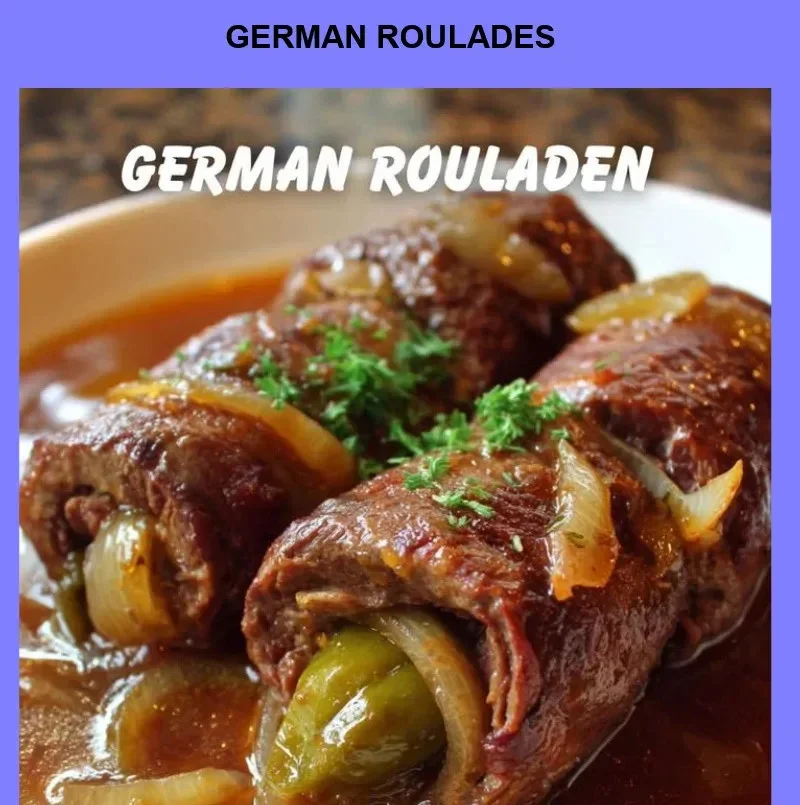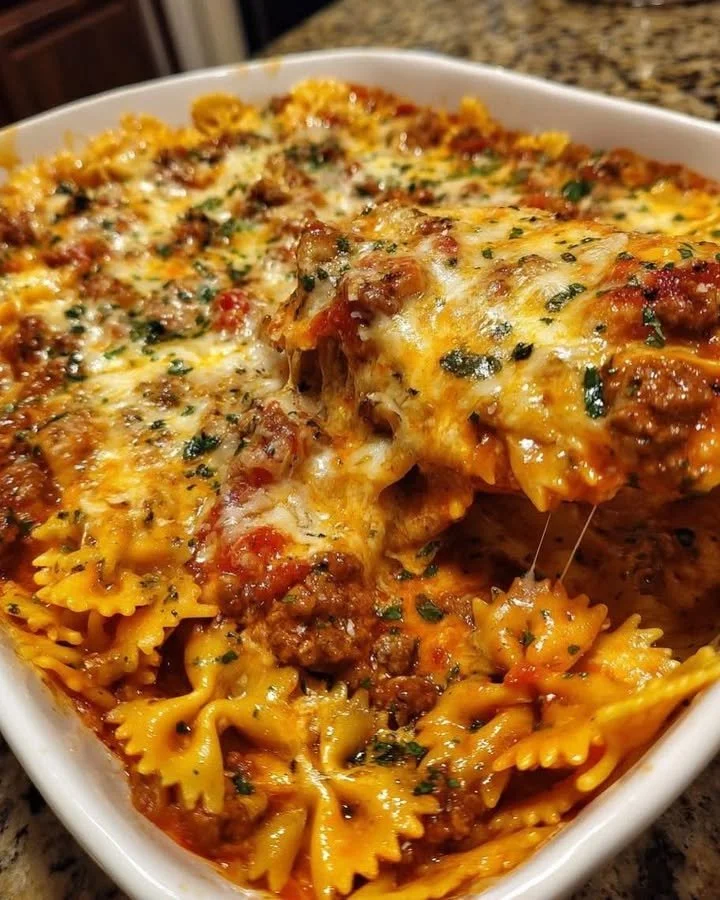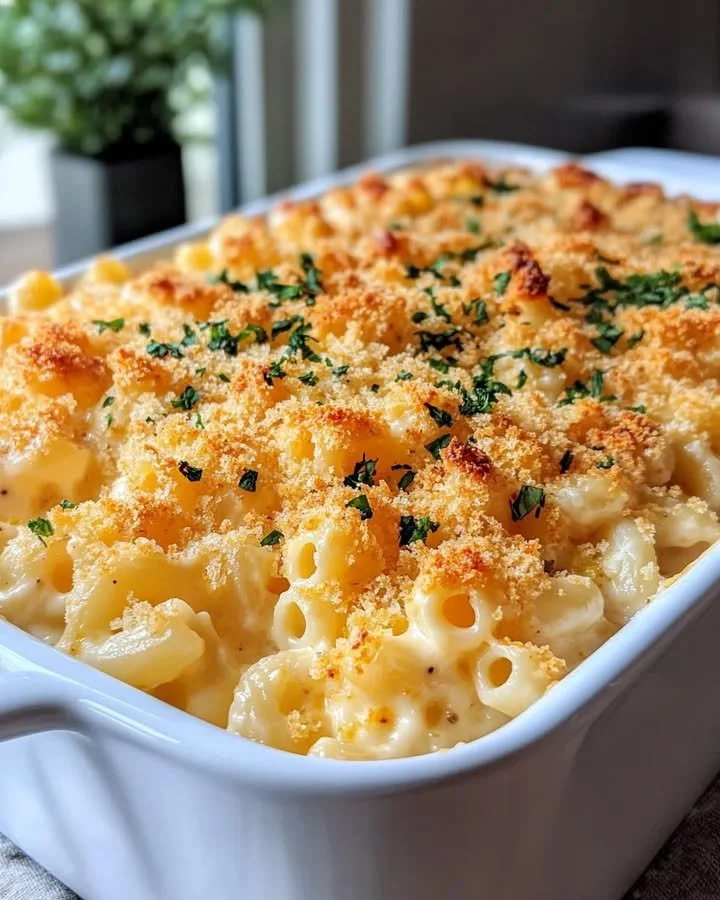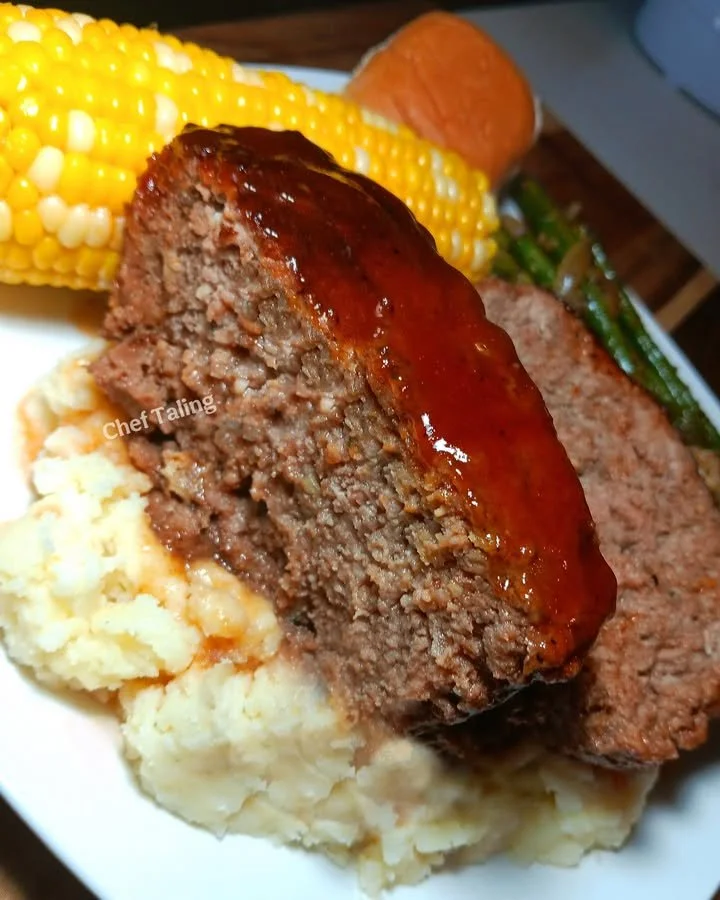German Roulades


Easy & Traditional Homemade German Roulades (Healthy Comfort Food)
2️⃣ Introduction — A Cozy Memory
There’s something about German Roulades that feels like a warm hug from the inside — German Roulades were my grandmother’s go-to when the house smelled like Sundays and slow-cooked patience. These tender, savory rolls — also called Rouladen — are a traditional German roulades recipe that’s perfect for a weeknight dinner when you want comfort, or for a festive Sunday family meal or holiday table. Made at home, they’re comforting, economical, and everything you want from a homemade main course.
🧂 Ingredients (serves 4)
- 8 thin beef slices (top round or beef flank/rouladen cut), about 100–150 g / 3–5 oz each
- Kosher salt and freshly ground black pepper
- 2 tbsp Dijon mustard (or German-style mustard)
- 8 slices bacon (streaky bacon or smoked pancetta)
- 1 large onion, thinly sliced (about 1 cup / 150 g)
- 4–6 small pickles (gherkin), quartered lengthwise
- 2 tbsp vegetable oil or olive oil
- 2 tbsp butter
- 2 medium carrots, chopped (about 150 g)
- 2 stalks celery, chopped (about 100 g)
- 2 cups beef broth (480–500 ml), low-sodium preferred
- 1/2 cup dry red wine (optional, 120 ml)
- 1 bay leaf and 2 sprigs fresh thyme (or 1 tsp dried thyme)
- 2 tbsp all-purpose flour (or gluten-free flour / almond flour for GF) — for dusting
- 1–2 tsp cornstarch or arrowroot mixed with 2 tbsp cold water to thicken (optional)
- Toothpicks or kitchen twine to secure roulades
Healthy swaps included in Tips & Variations below.
👩🍳 Directions
- Prep the meat: Lay out beef slices on a board and pat dry. Lightly flatten with a meat mallet if needed so each slice is even (about 1/4 inch / 6 mm). Season both sides with salt and pepper.
- Spread mustard: Spread about 1/2 tbsp Dijon mustard over each beef slice, leaving a small border.
- Add filling: Place one slice of bacon across each beef slice, add a spoonful of sliced onion (reserve the rest), and 1 pickle quarter. Don’t overfill.
- Roll & secure: Roll the beef tightly from one end and secure with toothpicks or tie with kitchen twine. Set aside.
- Dust with flour: Lightly dust each roulade with flour — this helps the sauce thicken later. Shake off excess.
- Brown the roulades: In a large heavy pot or Dutch oven, heat oil over medium-high. Add roulades and brown on all sides (about 3–4 minutes per side) until a deep golden crust forms. Work in batches if needed. Transfer roulades to a plate.
- Sauté aromatics: Reduce heat to medium. Add butter. Sauté the reserved sliced onions, chopped carrots and celery for 5–7 minutes until softened and starting to caramelize.
- Deglaze: Pour in the red wine (if using) and scrape up browned bits from the bottom — simmer 2 minutes to reduce.
- Add broth & herbs: Add beef broth, bay leaf, and thyme. Return roulades to the pot so they’re partly submerged. Bring to a gentle simmer.
- Braise: Cover and simmer gently for 1.5 to 2 hours on very low heat, or transfer covered to a 325°F / 160°C oven for 1.5–2 hours. Roulades are done when fork-tender.
- Make the gravy: Remove roulades and keep warm. Skim excess fat from the sauce. If you like a smoother gravy, strain sauce into a saucepan and simmer to concentrate. Thicken with cornstarch slurry (1–2 tsp cornstarch mixed with cold water) or whisk in a little butter + flour roux until you get desired consistency. Simmer ~5–10 minutes. Season to taste.
- Serve: Remove toothpicks or twine, slice roulades slightly on the diagonal, spoon gravy over top, and serve hot.
Cooking times recap: Browning ~10–15 minutes total; braising 90–120 minutes; gravy 5–10 minutes.
💡 Tips & Variations
- Browning matters: Don’t skip browning — the Maillard crust builds deep flavor in the sauce.
- Make ahead: Roulades taste even better reheated the next day after flavors meld. Prepare fully, cool, refrigerate, then reheat gently on low.
- Low-carb / Keto swap: Use almond flour to dust meat, skip carrots/celery or keep small amounts, and serve with cauliflower mash or roasted Brussels sprouts instead of potatoes.
- Gluten-free: Use gluten-free flour for dusting and a cornstarch slurry to thicken the gravy. Ensure pickles and mustard are GF.
- Veggie / Vegan version: Use thin slices of roasted eggplant or seared sliced king oyster mushrooms as the “wrap,” fill with caramelized onions, smoked tempeh or marinated seitan strips, and pickle. Braise in mushroom broth with red wine and tomato paste; thicken with cornstarch for a rich mushroom gravy. (Not a traditional roulade, but the idea translates beautifully.)
- Healthier swaps: Choose lean top round, use olive oil instead of butter, and low-sodium broth to cut salt. Add extra vegetables (parsnips, mushrooms) to the braise for bulk and nutrition.
- Serving ideas: Classic with buttered mashed potatoes, spaetzle, or red cabbage. Also great over egg noodles, with roasted root vegetables, or sliced thin over a crisp salad.
- Storage: Refrigerate leftovers in an airtight container for up to 3–4 days. Freeze roulades and gravy separately for up to 3 months — thaw overnight and reheat gently.
- Leftover ideas: Slice and serve in gravy over mashed potatoes, or thin-sliced in a crusty roll for a warm sandwich.
🩺 Health & Lifestyle Tie-in
German Roulades are a high-protein meal that can be adapted to be heart-healthier by choosing lean cuts and using olive oil. Slow-cooked meals with vegetables provide fiber, vitamins, and a satisfying portion size that helps keep you full longer — cooking at home like this can be both kinder to your wallet and an investment in your long-term health. Small changes in what you eat now can contribute to lower healthcare costs later; think of homemade meals as both comfort and care.
❤️ Conclusion
If you make these German Roulades, I’d love to hear how they turned out — leave a comment, share a photo, or tag me on social so I can see your cozy kitchen creation. Nothing beats homemade comfort food shared with people you love. Happy cooking!
If you want, I can add a printable recipe card, a shopping list, or a step-by-step photo guide for each stage — tell me which and I’ll put it together.


German Roulades
Ingredients
Method
- Lay out beef slices on a board and pat dry. Lightly flatten with a meat mallet if needed so each slice is even (about 1/4 inch / 6 mm). Season both sides with salt and pepper.
- Spread about 1/2 tbsp Dijon mustard over each beef slice, leaving a small border.
- Place one slice of bacon across each beef slice, add a spoonful of sliced onion (reserve the rest), and 1 pickle quarter. Don’t overfill.
- Roll the beef tightly from one end and secure with toothpicks or tie with kitchen twine. Set aside.
- Lightly dust each roulade with flour — this helps the sauce thicken later. Shake off excess.
- In a large heavy pot or Dutch oven, heat oil over medium-high. Add roulades and brown on all sides (about 3–4 minutes per side) until a deep golden crust forms. Work in batches if needed. Transfer roulades to a plate.
- Reduce heat to medium. Add butter. Sauté the reserved sliced onions, chopped carrots, and celery for 5–7 minutes until softened and starting to caramelize.
- Pour in the red wine (if using) and scrape up browned bits from the bottom — simmer for 2 minutes to reduce.
- Add beef broth, bay leaf, and thyme. Return roulades to the pot so they’re partly submerged. Bring to a gentle simmer.
- Cover and simmer gently for 1.5 to 2 hours on very low heat, or transfer covered to a 325°F / 160°C oven for 1.5–2 hours. Roulades are done when fork-tender.
- Remove roulades and keep warm. Skim excess fat from the sauce. If you like a smoother gravy, strain sauce into a saucepan and simmer to concentrate. Thicken with cornstarch slurry or whisk in a little butter + flour roux until you get desired consistency. Simmer for 5–10 minutes. Season to taste.
- Remove toothpicks or twine, slice roulades slightly on the diagonal, spoon gravy over top, and serve hot.











